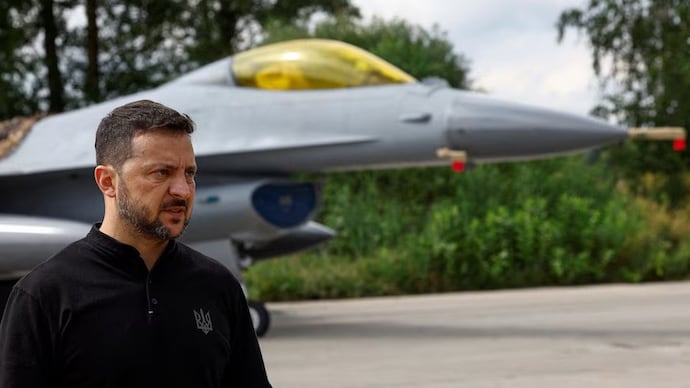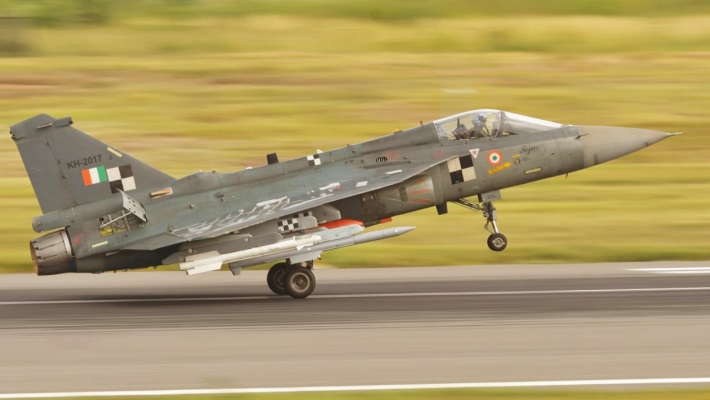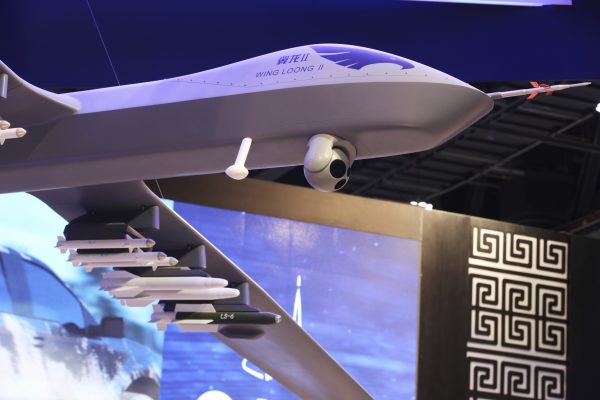SOURCE: RAUNAK KUNDE / NEWS BEAT / IDRW.ORG

The Indian Navy is on the cusp of a technological leap with its ambitious plans to integrate uncrewed underwater vehicles (UUVs) into its submarine fleet. These autonomous underwater drones, capable of launching from and recovering via torpedo tubes, will significantly enhance the Navy’s underwater capabilities.
In a parallel development, the Defence Research and Development Organisation (DRDO) has embarked on an equally groundbreaking project – the development of an underwater-launched unmanned aerial vehicle (ULUAV). This novel concept, in collaboration with a Pune-based defence startup, aims to create a drone that can be deployed from a submarine to conduct aerial missions.
Continue readingSOURCE: AFI

South Korea’s defense industry is making significant strides with Hanwha Aerospace unveiling its plans for an indigenous fighter engine. This engine is slated to power the future Block III variant of the KF-21 Boramae fighter jet, currently equipped with licensed GE F414 engines. The new engine is projected to deliver a thrust of 66.7 kN.
India, concurrently pursuing its fifth-generation Advanced Medium Combat Aircraft (AMCA), faces a similar challenge in developing a powerful engine to propel this ambitious project. The required thrust for the AMCA aligns closely with the specifications of South Korea’s upcoming engine.
Continue readingSOURCE: AFI

Vehicle Factory Jabalpur (VFJ), a key unit under the Ministry of Defence’s Armoured Vehicles Nigam Ltd (AVNL), has successfully met its production target for Mine Protected Vehicles (MPVs). The last batch of 11 MPVs was recently flagged off, marking a significant milestone for the facility.
Known for its role in bolstering the Indian Army’s capabilities, VFJ has consistently demonstrated its commitment to timely delivery of critical military equipment. The MPVs, designed to offer superior protection to soldiers in challenging terrains, are a testament to the manufacturing prowess of the facility.
Continue readingSOURCE: AFI

The Naval Science and Technological Laboratory (NSTL), a premier research arm of the Defence Research and Development Organisation (DRDO), has issued a tender for investigating the cavitation behavior of an unspecified ‘corvette’ hull. While the specific details of the corvette remain undisclosed, industry experts speculate that this research is likely linked to the Indian Navy’s upcoming Next Generation Corvette (NGC) project.
The NGC program, with an estimated value of Rs. 36,000 crore, saw the issuance of a Request for Proposal (RFP) in late May 2024. The contract is anticipated to be awarded to two shipyards next year, with the leading bidder securing five vessels. The winning design, developed by the Warship Design Bureau (WDB), is reportedly a 120-meter-long platform.
Continue readingSOURCE: AFI

In a groundbreaking development, the Indian Army is reportedly testing the use of cargo drones as short-range air ambulances to swiftly evacuate injured soldiers from the battlefield. A viral image circulating on social media shows a drone carrying a stretcher, believed to contain a dummy, being transported across a simulated battlefield.
The potential of drone technology for medical evacuation is immense. Drones can access remote and inaccessible terrains where traditional ambulances struggle to reach, significantly reducing response times and potentially saving lives. Additionally, drones can operate in hazardous environments, minimizing risks to rescue personnel.
Continue readingSOURCE: REUTERS

Ukrainian pilots have started flying F-16s for operations within the nation, President Volodymyr Zelenskiy said on Sunday, confirming the long-awaited arrival of the US-made fighter jets more than 29 months since Russia’s invasion.
The Ukrainian leader announced the use of F-16s, which Kyiv has long lobbied for, as he met military pilots at an air base flanked by two of the jets with two more flying overhead. “F-16s are in Ukraine. We did it. I am proud of our guys who are mastering these jets and have already started using them for our country,” Zelenskiy said at a location that authorities asked Reuters not to disclose for security reasons.
Continue readingSOURCE: IDRW.ORG TEAM
)
The first delivery of the indigenous Tejas Mk1A fighter jet to the Indian Air Force (IAF) has been delayed due to extensive software upgrades and testing requirements. Sources close to idrw.org, revealed that the IAF requested early onboard testing of the upgraded software, originally planned for a later stage. This, combined with the final software testing and planned ordnance delivery tests, has pushed back the delivery by several months.
When queried about reported issues with the ELTS’s ELM-2052 Active Electronically Scanned Array (AESA) radar and Electronic Warfare (EW) system, sources assured idrw.org that the concerns were minor. They are being addressed through software improvements and optimizations of the Digital Flight Control Computer (DFCC) and related software, rather than any hardware or backend process issues.
Continue readingSOURCE: IDRW.ORG TEAM

In a significant development in South Asian defense dynamics, Pakistan’s plans to acquire Chinese stealth fighter jets, potentially the FC-31, have raised questions about regional military balances. However, a senior Indian Air Force (IAF) officer, speaking on the condition of anonymity to idrw.org, asserted that this move would not force India to alter its own plans for procuring domestically made fighter jets.
Earlier this year, the Chief of the Pakistan Air Force (PAF) revealed intentions to acquire fifth-generation fighter jets from either China or Turkey. This acquisition is part of a strategy to modernize the PAF by replacing its aging fleet of F-16s. The potential procurement of advanced stealth fighters like the Chinese FC-31 represents Pakistan’s commitment to bolstering its air capabilities amidst regional security challenges.
Continue readingSOURCE: AFI

The Defence Research and Development Organisation (DRDO) is making significant strides in India’s quest for technological self-reliance with the development of its stealth wing technology demonstrator, SWiFT.
This unassuming prototype, resembling the formidable US B-2 Bomber, is the precursor to the much-anticipated Ghatak unmanned combat aerial vehicle (UCAV). A recent breakthrough came with the successful flight trial of SWiFT in a tailless configuration, placing India in a select group of nations mastering this complex technology. The Aeronautical Development Establishment (ADE), the DRDO lab behind SWiFT, has demonstrated remarkable ingenuity by creating a single-lift surface aircraft without conventional wings, tail, or fuselage.
Continue readingSOURCE: AFI

India’s Sukhoi-30MKI has showcased its formidable capabilities at Exercise Pitch Black, with the deployment of the advanced Astra Mk 2 air-to-air missile and the Nirbhay air-launched cruise missile (ALCM).
This marks a significant milestone for both weapon systems, confirming their operational readiness on the Sukhoi-30MKI. The Astra Mk 2, a Beyond Visual Range (BVR) missile with an impressive range of 160 kilometers, has been under development for several years. Its integration onto the Su-30MKI significantly enhances the aircraft’s air-to-air combat capabilities.
Continue readingSOURCE: AFI

Astra Microwave, a leading Hyderabad-based company, has achieved a significant milestone in radar technology by successfully executing the Active Antenna Array Unit (AAAU) of the Ship Borne Radar (SBR). This cutting-edge 6-meter S-band radar, known as the Long Range Multi-Function Radar (LRMFR), is set to replace the existing MFSTAR radar systems on Indian naval vessels. The LRMFR will handle a range of crucial tasks, from target tracking to fire control for Surface-to-Air Missiles (SAMs) and Ballistic Missile Defense (BMD).
The standout feature of the LRMFR is its antenna, boasting a diameter of 6 meters and a surface area of 36 square meters. This makes it four times larger than the Israeli radars currently installed on Indian frigates and destroyers. The implications of this advancement are significant for the Indian Navy’s operational capabilities.
Continue readingSOURCE: AFI

In a shocking and violent incident, a man identified as an agent of Pakistan’s Inter-Services Intelligence (ISI) was reportedly set on fire by a mob in Canada. Sources informed CNN-News18 on Saturday that the victim, Rahat Rao, runs a forex business in the Surrey Central area and belongs to the Canadian-Pakistani community.
The incident occurred when a person visited Rao’s office for a routine money exchange transaction. According to reports, the visitor then set Rao on fire before fleeing the scene. The motive behind this brutal act remains under investigation.
Continue readingSOURCE: AFI
A judge at the Bombay High Court recently made a controversial remark while hearing a plea by Khaled Gomaeai Mohammad Hasan, who is challenging a “Leave India Notice” issued to him by police in Maharashtra. Hasan, a Yemeni national, pleaded for protection from forcible deportation, arguing that returning to Yemen would pose a severe threat to his and his family’s lives, as reported by Indian legal website Live Law.
Yemen has been embroiled in a brutal civil war since 2014, when Houthi rebels seized the capital, Sanaa, and much of the country’s north, forcing the government into exile. Hasan arrived in India on a student visa in March 2014, followed by his wife in 2015. After their visas expired, the couple obtained refugee cards from the United Nations High Commission for Refugees (UNHCR). Despite this, they received a police notice in February this year, ordering them to leave India.
Continue readingSOURCE: IANS

China’s arms exports have significantly declined over the past decade due to issues related to poor quality, compatibility problems, and substandard operational performance. Although many countries have been compelled to purchase military imports from China because of lower costs and coercive economic influence, numerous reports highlight recurrent defects, inadequate technical support, and lack of spare parts, underscoring a serious quality issue within China’s military-industrial complex.
Major importers frequently cite hidden costs and technological incompatibility as additional factors adversely affecting China’s arms exports.
Continue readingSOURCE: REUTERS

Iran’s Revolutionary Guards said on Saturday that Palestinian militant group Hamas’ leader Ismail Haniyeh was slain in Tehran by a short-range projectile with a warhead of about 7 kg, and vowed severe revenge.
Wednesday’s assassination has aroused fears of direct conflict between Tehran and its arch-enemy Israel in a region shaken by Israel’s war in Gaza and a worsening conflict in Lebanon.
Revenge for the killing of the Hamas leader will be “severe and at an appropriate time, place, and manner”, the Guards’ statement added, blaming the “terrorist Zionist regime” of Israel for his death.
Continue reading